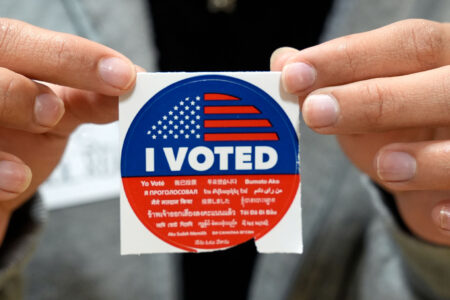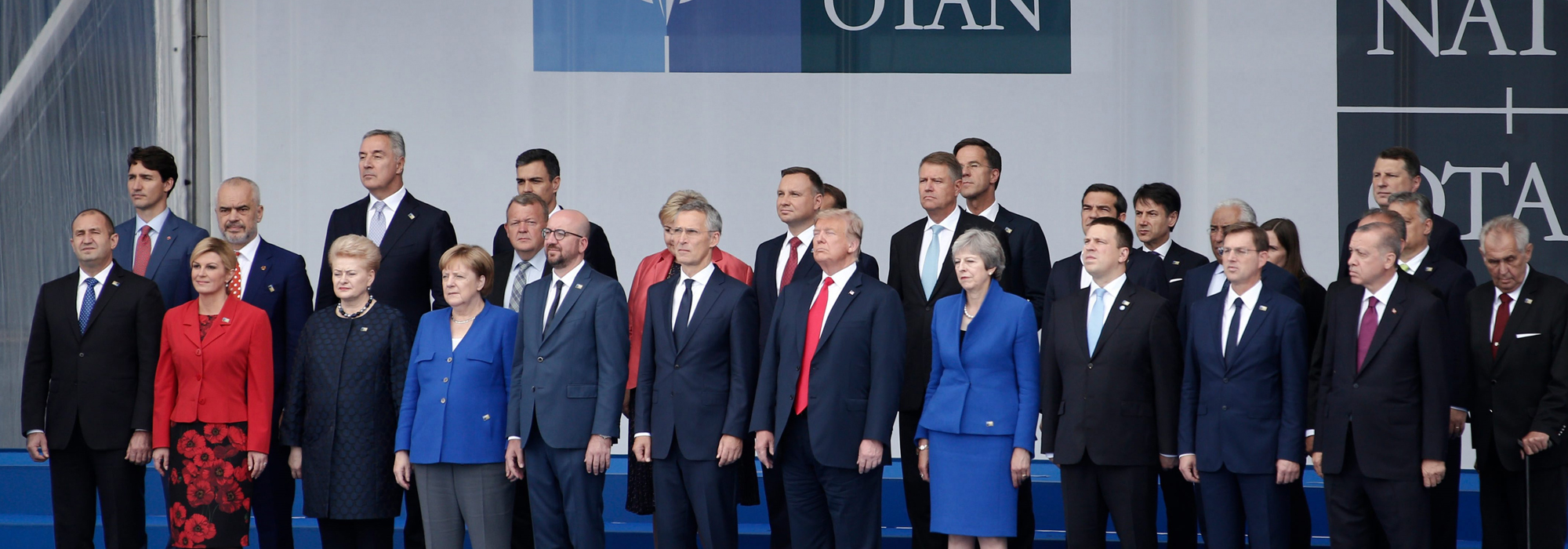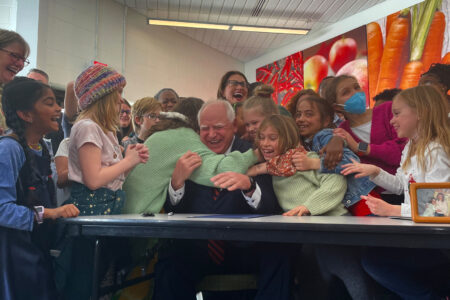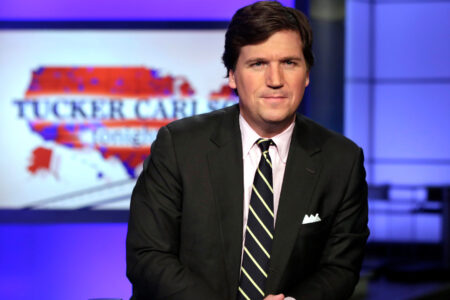
Is the West falling apart? Although news of the West’s demise may be premature, the increasingly erratic policies of US President Donald Trump are placing enormous pressure on the military and nonmilitary ties that bind us. And it’s not just the United States. Britain’s exit from the European Union, no matter how amicable the eventual terms of divorce, marks another significant blow to Western unity.
Trump is obviously at the centre of the current firestorm. But as the President bullies some of America’s key Western allies on trade, defence and foreign policy, other questions arise. Has the West organized itself in the strongest way possible to withstand such rogue actions by its most powerful member? Instead of North America and Europe being linked together by a series of separate defence and trade arrangements, would a more formal “Atlantic Community” be more effective in keeping the West together?
Should NATO, for example, become an organization that is about more than defence, and concern itself with trade and other nonmilitary matters too?
The idea has a certain appeal. A nonmilitary role for NATO could potentially result in the formation of a huge trading bloc of nations. As a member of a formal economic and defence community, it would be extremely difficult for the United States, or any other nation, to engage in capricious trade actions without facing serious repercussions from other alliance members.
A formal Atlantic Community might also create a larger framework within which Britain, always wary of being too close to a united Europe, might feel more secure. Finally, such an arrangement could potentially give member states more power and influence when it comes to curbing the foreign policy excesses of the United States.
Linking trade with defence is not necessarily a strange proposition. In fact, it’s odd that NATO members pledge their full military support to each other but receive no special trading status. If we are prepared to send our sons and daughters to defend an alliance partner, shouldn’t we get automatic access to their markets?
That’s currently not the way it works. Western defence is organized under the NATO umbrella, and trade through the European Union, NAFTA and other agreements. But this bifurcated arrangement was not preordained. As I outlined in my 2006 book, The North Atlantic Treaty Organization, 1948-1957: Community or Alliance?, when the leaders of the West came together in the late 1940s to negotiate what would become NATO, many favoured a vision that went far beyond military arrangements.
Canada was by far the greatest proponent of the Atlantic idea. Canadian leaders immediately saw value in having any treaty contain nonmilitary arrangements, particularly economic ones. Such an arrangement, they believed, would help break down trade barriers, balance their relationship with the United States, Britain and Western Europe, and serve to moderate US foreign policy.
Nonetheless, the Canadians failed to generate much enthusiasm among their allies. Most countries negotiating the North Atlantic Treaty saw its purpose as gaining a military commitment to stave off the Soviet threat. As for economic matters, their focus was on greater cooperation among Western European nations, particularly because that was a key goal of the US Marshall Plan, which was at that moment distributing significant postwar aid in Europe.
It should be stressed that Canada didn’t want the new alliance to take over existing multilateral economic machinery. Its vision was more evolutionary in nature. As External Affairs Minister Lester Pearson explained to his cabinet colleagues in late 1948: “The North Atlantic Community is today a real commonwealth of nations which share the same democratic and cultural traditions. If a movement towards its political and economic unification can be started this year, no one can forecast the extent of the unity which may exist, five, ten or fifteen years from now.”
Canada’s persistence paid off. Article 2 of the North Atlantic Treaty, often referred to as the Canadian article, commits members to undertake closer cooperation, particularly economically. Although it was a victory of sorts for Canada, the other signatories had mainly agreed to its provision simply to placate their ally.
Despite this lack of consensus over the article’s meaning, it did not remain dormant. As the Cold War intensified, many saw greater nonmilitary cooperation as a way of dealing with many challenges facing the West, from the question of German reintegration to coping with the economic strain of rearmament. No consensus ever seemed to emerge, however, on how to make article 2 fully operational, and Canada, increasingly indecisive, was unable to provide strong leadership.
In the early 1950s, Britain became a strong advocate for the broader Atlantic alliance idea. Uneasy about steps being taken by the countries of Western Europe toward greater unity, it saw an Atlantic system as a way to maintain its ties with Europe while still cooperating with the United States, Canada and other Commonwealth countries.
These efforts reached a climax in 1952 with the end of Marshall Plan aid to Europe. Here was an opportunity to broaden economic cooperation from a European framework to an Atlantic one. Nevertheless, despite British advocacy for the Atlantic vision, there was too much support among most NATO members for keeping the focus on Western Europe, and this view prevailed.
This didn’t mean the end of article 2. Nonmilitary cooperation continued to make guest appearances within NATO, particularly when it came to political consultation. Many member countries argued that for NATO to operate properly, there had to be some foreign policy coherence among its members. Building such coherence required meaningful consultation within the alliance.
This was particularly true when it came to NATO’s most powerful member, the United States, and, to a lesser extent, France and Britain. Despite efforts to use article 2 to mandate such consultation, the results were mixed, and, just as they are today, NATO members were often caught by surprise by many of the foreign policy adventures of its leading members.
The end of the Cold War in the late 1980s and early 1990s gave article 2 some renewed prominence as NATO’s leaders recognized the challenge of keeping the West unified without a common enemy. Was greater nonmilitary cooperation the answer? A series of international conflicts, such as those in the former Yugoslavia, combined with the growing threat of terrorism, quickly rendered that question moot, and defence once again became NATO’s overwhelming focus.
As NATO faces its current existential crisis, the West’s failure to implement the Atlantic idea may prove to have been a lost opportunity. It might, however, represent a framework for the future — even if only over the long term. A true Atlantic community would limit the freedom of the United States to engage in actions against its allies on trade or defence, as it would face reprisals from the entire community. Restraining the US under such an arrangement would be welcomed in many quarters, perhaps legitimizing the maxim once uttered by US President Dwight D. Eisenhower: “If you can’t solve a problem, enlarge it.”
Photo: NATO member countries heads of states and governments meeting in Brussels, Belgium on July 11, 2018. Photo by Alexandros Michailidis/Depo Photos/ABACAPRESS.COM
Do you have something to say about the article you just read? Be part of the Policy Options discussion, and send in your own submission. Here is a link on how to do it. | Souhaitez-vous réagir à cet article ? Joignez-vous aux débats d’Options politiques et soumettez-nous votre texte en suivant ces directives.






